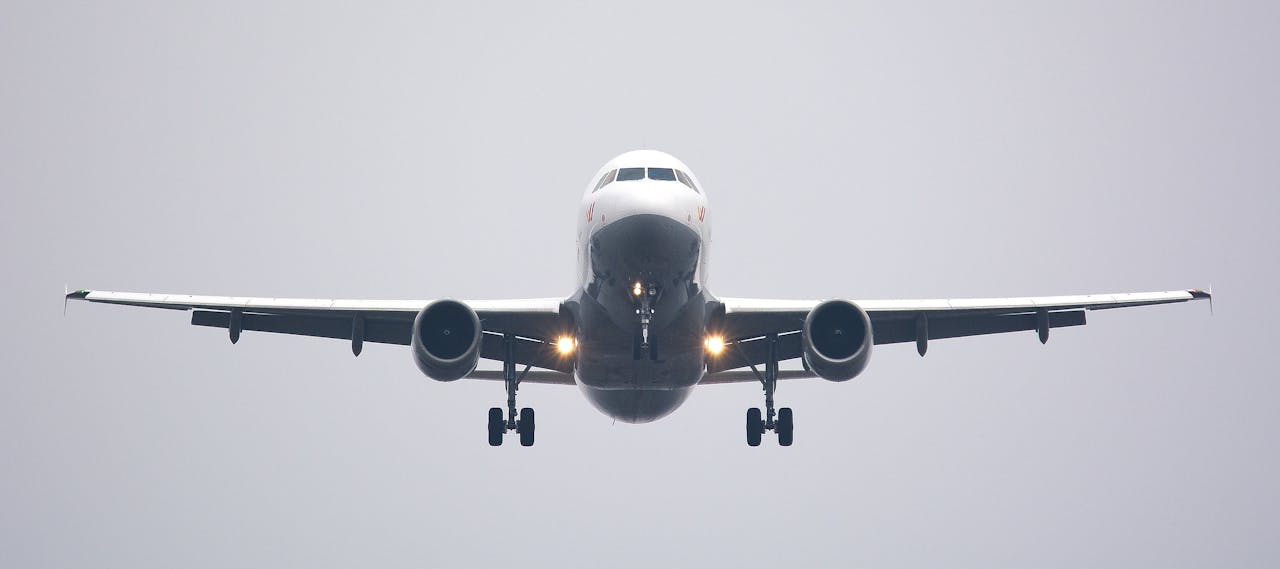Published On: 16 July, 2024

Table of Contents:
- Abstract
- Introduction
- Historical Background
- Indian Laws on Aviation
- Aircraft Act, 1934
- Aircraft Rules, 1937
- Carriage by Air Act, 1972
- The Airports Authority of India Act, 1994
- National Civil Aviation Policy, 2016
- International Laws on Aviation
- Chicago Convention 1944
- Montreal Convention 1999
- Regulatory Authorities
- Directorate General of Civil Aviation (DGCA)
- Airports Authority of India (AAI)
- Bureau of Civil Aviation Security (BCAS)
- Landmark Case
- Conclusion
- Reference
ABSTRACT
Navigating the skies requires not just technical skill, but also a robust legal framework to ensure the safety and rights of all involved. This article provides an in-depth analysis of aviation laws and regulations in India, outlining the comprehensive legal framework that governs the Indian aviation sector. It begins with a historical overview, tracing the evolution of aviation laws and regulations in India as well as international laws on aviation. The key regulatory bodies, which are also considered as the stakeholders in the aviation sector are discussed in detail, highlighting their roles and responsibilities in ensuring safety, security, and efficiency within the aviation industry. The article examines crucial legislations and conventions that shape the legal framework governing the aviation industry; it also delves into specific safety and security regulations and environmental standards. The article concludes by emphasizing the importance of continuous regulatory adaptation to meet the dynamic challenges of the aviation industry, ensuring sustainable growth and alignment with international standards.
INTRODUCTION
The aviation sector in India has undergone rapid growth in recent years with development and advancement. Aviation law is a complex and constantly evolving field of law that governs the management and regulation of aircraft and airports. The laws and regulations are designed to ensure the safety, security, and efficiency of air transportation across the globe. These laws govern various aspects of the aviation industry, including aircraft operations, air traffic management, safety standards, and environmental considerations.
The corpus of regulations and guidelines controlling the use of airspace and its advantages for aviation, the general public, and governmental bodies throughout the globe is known as Air Law. In simple words, Air law is the area of law that is concerned with the control of the world’s air space. The strong stand of the aviation industry contributes to the growth of both the national and global economy. In most regions of the world, aviation is now a significant national industry. Aviation laws and regulations play a critical role in ensuring the safety and security of air transportation by way of protecting the rights and interests of all those involved in the aviation industry.
HISTORICAL BACKGROUND
The origin of aviation law can be traced back to the late 19th and early 20th centuries when the development and creation of aircraft began. As air transportation of passengers and freight grew in popularity, it became necessary that a legal framework was needed to regulate aircraft operations, safeguard passengers and cargo, and address disputes within the aviation industry.
One of the earliest laws to regulate air transportation was the Air Navigation Act of 1911 in the United Kingdom, the legislation addresses some important aspects of the aviation sector such as pilot licensing and aircraft registration. In the United States, the Air Commerce Act of 1926 established the Aeronautics Branch within the Department of Commerce to oversee air traffic and navigation, as well as to encourage the growth of the aviation industry in the United States.
The aviation industry in India came into existence and evolved in the early 20th century. The first commercial flight in the country flew on February 18, 1911, between Allahabad and Naini. The first international commercial flight was operated by Imperial Airways, the airline connected Delhi to Karachi and other destinations in 1912. In 1932, J.R.D. Tata launched an air postal service using an airplane, which led to the founding of Tata Airlines. This airline eventually evolved into what is now known as Air India. In 1947, after India had gained independence, the country had nine air transportation companies that provided freight and passenger services. To further develop the country’s aviation sector, the Indian government and Air India, formerly known as Tata Airlines, established Air India International Ltd. as a joint venture. In 1946, Tata Airlines was officially renamed Air India. In 1953, the Indian government enacted the Air Corporations Act, 1953 nationalizing all civil aviation carriers in the country to address the financial difficulties faced by the Indian civil aviation sector.
The Airports Economic Regulatory Authority of India Act, 2008 established the Airports Economic Regulatory Authority of India (AERA). AERA is the body that regulates tariffs and other aeronautical charges while also performing the function of monitoring airport performance standards. In the context of Indian airport regulation, AERA takes into account several factors: airports function as natural monopolies; they are considered public goods; and for both Brownfield and Greenfield airports, the Government of India has provided land to developers at very low costs, often under the Land Acquisition Act, 1894.
As of today, India has bilateral Air Service Agreements (ASAs) with 108 countries. While 72 international airlines operate in and out of India, four private domestic airlines which include Jet Air, IndiGo, SpiceJet, and Kingfisher fly to 35 destinations across 25 countries. The national airline, Air India, operates numerous international routes, including 7 in North America, 9 in Europe, 12 in the Gulf, 2 in the Middle East, 2 in Africa, and 13 in East and West Asia. With a large fleet of aircraft, India holds a significant position in the civil aviation market.
INDIAN LAWS ON AVIATION
At the national level, aviation laws are enforced by government agencies such as the Directorate General of Civil Aviation (DGCA), the Airport Authority of India (AAI), and the Bureau of Civil Aviation Security (BCAS) amongst other agencies. These agencies are tasked with issuing regulations, enforcing safety standards, and investigating accidents and incidents. They also ensure compliance with international standards and regulations established by the International Civil Aviation Organization (ICAO). Aviation law in India is a rapidly evolving area of law that covers a broad spectrum of issues related to the operation and regulation of aircraft and airports. The scope of aviation law in India includes the regulation of air carriers, air traffic control and navigation, aircraft design and maintenance, pilot training and certification, engineer training and certification, and liability for accidents and incidents.
The Indian aviation sector is governed by several laws, regulations, and policies that are designed to ensure the safe and efficient operation of aircraft and airports. Some of the major aviation laws applicable in India include;
Aircraft Act, 1934
The Aircraft Act of 1934 is the primary legislation governing civil aviation in India. The act set out the fundamental framework for regulating civil aviation in India. It addresses issues such as aircraft registration, pilot licensing, and the regulation of air traffic and navigation.
Aircraft Rules, 1937
The Aircraft Rules of 1937 was formulated under the Aircraft Act, of 1934, it provides detailed regulations for the civil aviation sector in India. The legislation outlines the rules and procedures in dealing with the major aspects of civil aviation such as the procedures for aircraft registration, requirements and procedures for licensing pilots, flight engineers, and other crew members, the operation of air traffic control, and also the procedures for investigating accidents and incidents to determine causes and safety measures.
The Carriage by Air Act, 1972
The Carriage Act of 1972 is the main framework that governs the rights and liabilities of passengers, air carriers, and all other parties in relation to air carriage. The Act states the liability of airlines for passenger injury, loss of baggage and cargo as well as the compensation limits and claims procedures.
The Airports Authority of India Act, 1994
The Airport Authority of India Act of 1994 is the legal framework that established the Airport Authority of India (AAI). The Airport Authority of India is the regulatory body that performs the function of management and development of airports across the country.
The Directorate General of Civil Aviation Act, 2011
The Directorate General of Civil Aviation Act of 2011 is the legal framework that established the Directorate General of Civil Aviation (DGCA). The Directorate General of Civil Aviation is the regulatory body that performs the function of overseeing regulations and ensuring compliance in the civil aviation sector in India.
National Civil Aviation Policy, 2016
The National Civil Aviation Policy (NCAP) 2016 was introduced by the Government of India to promote the growth of the aviation sector. The policy creates an eco-system that provides safe, secure, affordable, and sustainable air travel for passengers and air transportation of cargo with access to various parts of India and the world.
INTERNATIONAL LAWS ON AVIATION
International aviation law is governed by various multilateral treaties, conventions, and agreements that establish standards and regulations to ensure safety, security, and efficiency in global air transportation. At the international level, aviation law is regulated by several multilateral treaties and agreements, including but not limited to the Convention on International Civil Aviation and the Montreal Convention. These conventions set common rules and standards for aircraft operations and define the rights and responsibilities of countries and airlines. They also ensure the protection of passenger rights and outline airlines’ liability in the event of an accident.
Without exception, the aviation sector is also subject to legal issues due to its complex and highly regulated nature. These legal issues cover various aspects of the industry, including safety, security, environmental concerns, customer service, labor relations, cyber security, and more. As technology and the aviation industry continue to evolve, the legal landscape is expected to change accordingly. The growing presence of drones in the airspace necessitates regulation to ensure their safe integration. Additionally, cyber security threats are becoming a significant concern in the aviation sector, prompting the implementation of various measures to protect aircraft and passenger data from cyber-attacks.
The International Civil Aviation Organization (ICAO) is the main international body that sets standards and regulations for the aviation industry. The International Civil Aviation Organization is an agency of the United Nations that was established in 1944 with the purpose of managing the administration and governance of the Chicago Convention, that is, the Convention on International Civil Aviation. The organization currently has approximately 193 member states.
All things considered, aviation legislation is essential to maintaining the effectiveness and safety of the world’s aviation sector. It safeguards the rights of travelers and other interested parties while assisting in the promotion of a safe and secure atmosphere for air travel. With the growth of the aviation industry, the scope of aviation law will continue to expand, making it an important area of law in the years to come. It is a constantly changing field that needs to be updated and modified on a regular basis to stay up with the latest technological advancements and market trends.
The International aviation sector is governed by several treaties, regulations, and policies that are designed to ensure the safe and efficient operation of aircraft and airports across the globe.
Some of the major international aviation laws include;
Chicago Convention, 1944
The Chicago Convention is also known as the Convention on International Civil Aviation. The Chicago Convention is the foundational legal document for international civil aviation, establishing a comprehensive framework for the regulation and development of global air transport. The main aim of the convention is to establish international norms and regulations for civil aviation to ensure safe, efficient, and orderly air transportation. The convention led to the creation of the International Civil Aviation Organization (ICAO), a specialized agency of the United Nations responsible for coordinating international air travel regulations and standards.
Tokyo Convention, 1963
The Tokyo Convention, 1963 is also known as the Convention on Offenses and Certain Other Acts Committed on Board Aircraft. The Tokyo Convention aims to address offenses and other acts that may jeopardize the safety of aircraft and the persons or property on board, as well as to maintain order and discipline on aircraft. This legal framework has been ratified by 186 countries. It is a legal framework that addresses the matter of jurisdiction over offenses and acts committed on board and ensures the passengers and crew members are protected from unlawful interference while on board an aircraft.
The Montreal Convention, 1999
The Montreal Convention, 1999 is also known as the Convention for the Unification of Certain Rules for International Carriage by Air. The main objective of the convention is to modernize and consolidate the rules governing the international carriage of passengers, baggage, and cargo. It is a legal framework that seeks to provide uniformity and predictability in terms of airline liability, enhancing protection for passengers and shippers. The Montreal Convention modernizes and replaces the Warsaw Convention of 1929 and its subsequent amendments. It provides a unified legal framework for international air travel, balancing the interests of airlines and passengers, and reflecting the evolving needs of the global aviation industry.
REGULATORY AUTHORITIES
The aviation sector in India is regulated by several authorities established by the Government of India through the Ministry of Civil Aviation, the Ministry of Civil Aviation of India is the ministry responsible for the formulation of national policies and programmes for the development and regulation of civil aviation. The regulatory authorities work collaboratively to ensure the safety, security, and efficient functioning of the aviation sector of India. These regulatory authorities play a crucial role in shaping policies, maintaining standards, and overseeing the industry’s adherence to both national and international regulations.
Some of the major regulatory authorities in India that regulate the aviation industry include;
Directorate General of Civil Aviation (DGCA)
The Directorate General of Civil Aviation is the primary regulatory body in India for civil aviation. It is a regulatory body that was established under the Directorate General of Civil Aviation Act, of 2011. The Directorate General of Civil Aviation is the regulatory body in the field of Civil Aviation that primarily deals with safety issues. It is responsible for the regulation of air transport services across India and for the enforcement of civil air regulations, air safety, and airworthiness standards. It also co-ordinates all regulatory functions with the International Civil Aviation Organisation (ICAO).
Airport Authority of India (AAI)
The Airport Authority of India is a regulatory body that was established on 1st April 1995 under the Airport Authority of India Act, 1994. The Airport Authority of India is the regulatory body that is responsible for creating, maintaining, upgrading, and managing civil aviation infrastructure in India. The regulatory body is responsible for the planning and developing of new airport infrastructure to accommodate the growing air traffic demand and also ensure the efficient functioning of airport facilities, including passenger terminals, runways, taxiways, and cargo terminals. The efforts of the Airport Authority of India in modernizing airport infrastructure and implementing advanced air traffic management systems have contributed to the overall economic development by enhancing connectivity, promoting tourism, and facilitating trade and commerce.
Bureau of Civil Aviation Security (BCAS)
The Bureau of Civil Aviation Security is the regulatory authority for civil aviation security in India. On the advice of the Pande Committee, which was established following the hijacking of the Indian Airlines flight on September 10, 1976, the regulatory body was first established as a cell under the Directorate General of Civil Aviation (DGCA) in January 1978. The cell’s responsibilities included personnel training, monitoring, inspection, and coordination in relation to civil aviation security. The Bureau of Civil Aviation Security was reorganized into an independent department on 1st April 1987 under the Ministry of Civil Aviation as a sequel to the Kanishka Tragedy of June 1985. The main responsibility of the Bureau of Civil Aviation Security is to lay down standards and measures with respect to the security of civil flights at International and domestic airports in India.
LANDMARK CASES
There are several landmark cases on aviation laws in India, but some of the notable ones include;
Nipa Dhar (Nee Ghosh) vs National Aviation Company Of India Ltd 2010
In the landmark case of Nipa Dhar (Nee Ghosh) vs National Aviation Company Of India Ltd, the appellant was an air hostess who had initially served as a cabin crew for the respondent company before becoming a permanent employee. She was terminated from service due to her excess weight in September 1997. The writ petition challenged her termination, and the court found that the termination order violated the principles of natural justice. The core issue was not her weight but rather that she was suffering from phobic anxiety syndrome in relation to flying. Therefore, the case centered on whether these facts justified the maintainability of the writ petition and the associated legal issues.
The court held that the writ petition is legally maintainable and that the termination action violated Articles 14 and 21 of the Indian Constitution. Consequently, the termination order was deemed legally invalid and was dismissed.
Air India v. Nargesh Meerza (1981)
The case of Air India v. Nargesh Meerza 1981 is a landmark judgment by the Supreme Court of India that addressed issues related to gender discrimination and female cabin crew employment rights in Air India.
Air India, the national airline had discriminatory employment policies against female flight attendants. Some of these policies were as follows;
- Female flight attendants were required to resign or be terminated upon their first pregnancy.
- The retirement age for female flight attendants was 35 years, extendable to 45 at the airline’s discretion, compared to a higher retirement age for male crew members.
- Air hostesses were not permitted to marry within the first four years of their service. Violation of this rule may also lead to termination.
Together with other flight hostesses, Nargesh Meerza filed a legal challenge to these restrictions, claiming that they were discriminatory and infringed against their fundamental rights guaranteed by the Indian Constitution. The question was whether Articles 14, 15, and 16 of the Indian Constitution—which guarantee equality before the law, forbid discrimination based on race, religion, caste, sex, or place of birth, and ensure equality of opportunity in matters pertaining to public employment—were violated by Regulations 46 and 47 of the Air India Employees Service Regulations.
The court held that the portions of Regulation 47 of the Air India Employees Service Regulations were unconstitutional. The portion of Regulation 47 of the Air India Employees Service Regulations, which grants the Managing Director the option to extend the service of an Air Hostess, is deemed invalid.
CONCLUSION
In conclusion, aviation law plays a vital role in maintaining the safety, efficiency, and sustainability of the global aviation industry. It covers a wide range of legal issues, including the regulation of air carriers, air traffic control, aircraft design and maintenance, pilot certification, and liability for accidents and incidents. Therefore, the importance of a robust legal framework in the aviation industry cannot be overstated, as it ensures that all stakeholders, from passengers to airline operators, operate within a secure and regulated environment. Taking into account the rapid pace of technological advancements and the evolving nature of safety and security threats, continuous regulatory adaptation is essential to address these dynamic challenges effectively.
Continuous regulatory adaptation ensures that aviation laws remain relevant and effective in the face of new developments. In addition to that, the global nature of aviation necessitates harmonized regulations that align with international standards, ensuring smooth and safe international operations. The proactively updating and refining of the aviation laws will not only help mitigate risks and enhance security but also support the industry’s growth and adaptation to future challenges. This ongoing regulatory evolution is vital for fostering a resilient, secure, and progressive aviation sector that meets the demands of a rapidly changing world.
REFERENCE
Poonam Dwivedi, Navigating the Skies: An Overview of Aviation Law in India, IJMFR, Volume 5, Dec 2023
file:///C:/Users/Hello/Downloads/Navigating%20the%20Skies.pdf
Meera Abdulla Alshamsi, The Legal Implication of Aviation Industry’s Entrance to The Metaverse, AJEE, Jan 2024
https://ajee-journal.com/upload/attaches/att_1705420503.pdf
Paridhi Dave, Aviation Law: Laws Governing Unruly Passenger, Ipleaders, Aug 2020.
Vivian Kelechi Umemba, Comparative Legal Analysis of Bilateral Air Service Agreement, Volume 3, 0ct 2015
Rohit Chandock, Impact of Aviation Laws, Legal Service India, Sept 2023
https://www.legalserviceindia.com/legal/article-10111-impact-of-aviation-laws.html#google_vignette
Sahibpreet Singh & Lalita Devi, Legal Framework, Challenges and Constitutional Implications in Aviation, IJCRT, Volume 11, Nov 2023
https://ijcrt.org/papers/IJCRT2311097.pdf
Nathan Economic Consulting India Pvt. Ltd., Research Study of the Civil Aviation Sector in India, January 24, 2012.
https://iica.nic.in/images/sclmr_research/Civil%20Aviation%20Sector.pdf
Dr Moses George, Civil Aviation Governance in India,





